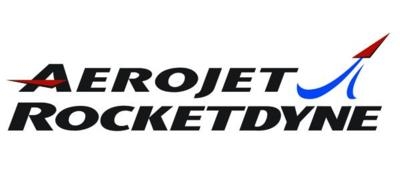Wed, Jun 25, 2014
Company Says '3D Printing' Can Make Engine Construction More Cost Effective
Aerojet Rocketdyne Aerojet recently successfully completed a series of hot-fire tests on a Bantam demonstration engine built entirely with additive manufacturing. The tests were a key step in the development of a more cost-effective engine family for booster, upper-stage and in-space propulsion.

"The demonstration of this engine, made completely with additive manufacturing, is another significant milestone in our path to changing propulsion affordability," said Jay Littles, director of Advanced Launch Propulsion Programs at Aerojet Rocketdyne. "We are not just making a stand-alone chamber or injector derived from traditional design approaches. Rather, we are integrating the full capability of additive manufacturing processes to evolve a proven, reliable, affordable design. We are doing so with technical depth and rigor to meet our unparalleled quality and safety requirements."
The engine, which is normally comprised of dozens of parts, consisted of only three additive-manufactured components: the entire injector and dome assembly; the combustion chamber; and a throat and nozzle section. This particular liquid oxygen/kerosene engine, dubbed "Baby Bantam" (because it is at the lower end of the Bantam engine family thrust range), has a thrust of 5,000 pounds. The Bantam engine family extends up to 200,000 pounds of thrust and can be adapted to use various fuels, including: kerosene, ethanol, methane and storable propellants.
The Bantam engine family is being adapted from the proven design of the Atlas Sustainer engine to take full advantage of additive manufacturing capabilities. The team also was able to reduce total design and manufacturing time from more than a year to a couple of months, reduce the cost of the engine by approximately 65 percent. This engine test was part of a multi-year Aerojet Rocketdyne additive manufacturing development effort that already has demonstrated successful process development, design tool evolution, component fabrication and component hot-fire tests.
More News
From 2023 (YouTube Version): Legacy of a Titan Robert (Bob) Anderson Hoover was a fighter pilot, test pilot, flight instructor, and air show superstar. More so, Bob Hoover was an i>[...]
Get The Latest in Aviation News NOW on Instagram Are you on Instagram yet? It's been around for a few years, quietly picking up traction mostly thanks to everybody's new obsession >[...]
Aero Linx: B-52H Stratofortress The B-52H Stratofortress is a long-range, heavy bomber that can perform a variety of missions. The bomber is capable of flying at high subsonic spee>[...]
Altimeter Setting The barometric pressure reading used to adjust a pressure altimeter for variations in existing atmospheric pressure or to the standard altimeter setting (29.92).>[...]
"Knowing that we play an active part in bettering people's lives is extremely rewarding. My team and I are very thankful for the opportunity to be here and to help in any way we ca>[...]
 Classic Aero-TV: Remembering Bob Hoover
Classic Aero-TV: Remembering Bob Hoover ANN FAQ: Follow Us On Instagram!
ANN FAQ: Follow Us On Instagram! ANN's Daily Aero-Linx (05.15.24)
ANN's Daily Aero-Linx (05.15.24) ANN's Daily Aero-Term (05.15.24):Altimeter Setting
ANN's Daily Aero-Term (05.15.24):Altimeter Setting Aero-News: Quote of the Day (05.16.24)
Aero-News: Quote of the Day (05.16.24)



